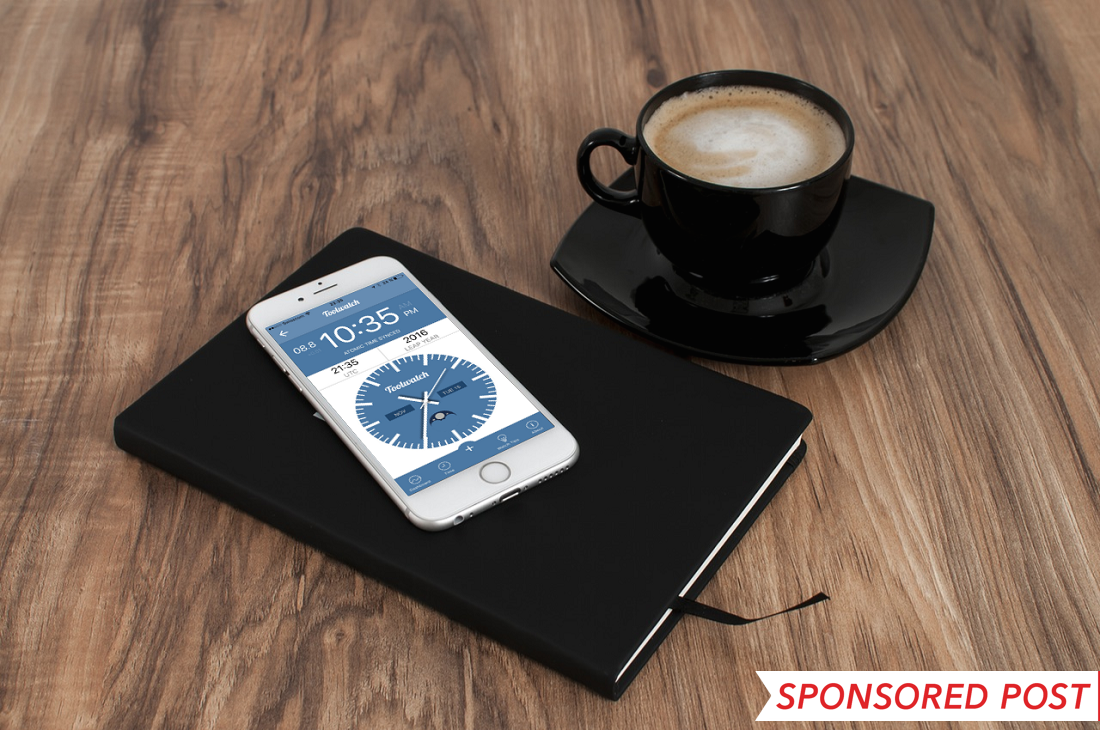
Toolwatch.io has become the easiest way to measure the accuracy of our watches. Throughout the day, the Android and iOS apps provide us critical information concerning watch performance. Measuring accuracy has never been this simple and useful. Why is it necessary to regularly measure watch performance? By today’s standards, the modern watchmaking industry takes pride in perfectly finished and decorated movements while accuracy may sometimes give the impression of not being the first priority. As surprising as it might sound, it is not rare to see a modern tourbillon watch that is less accurate than a good old regular ETA movement.
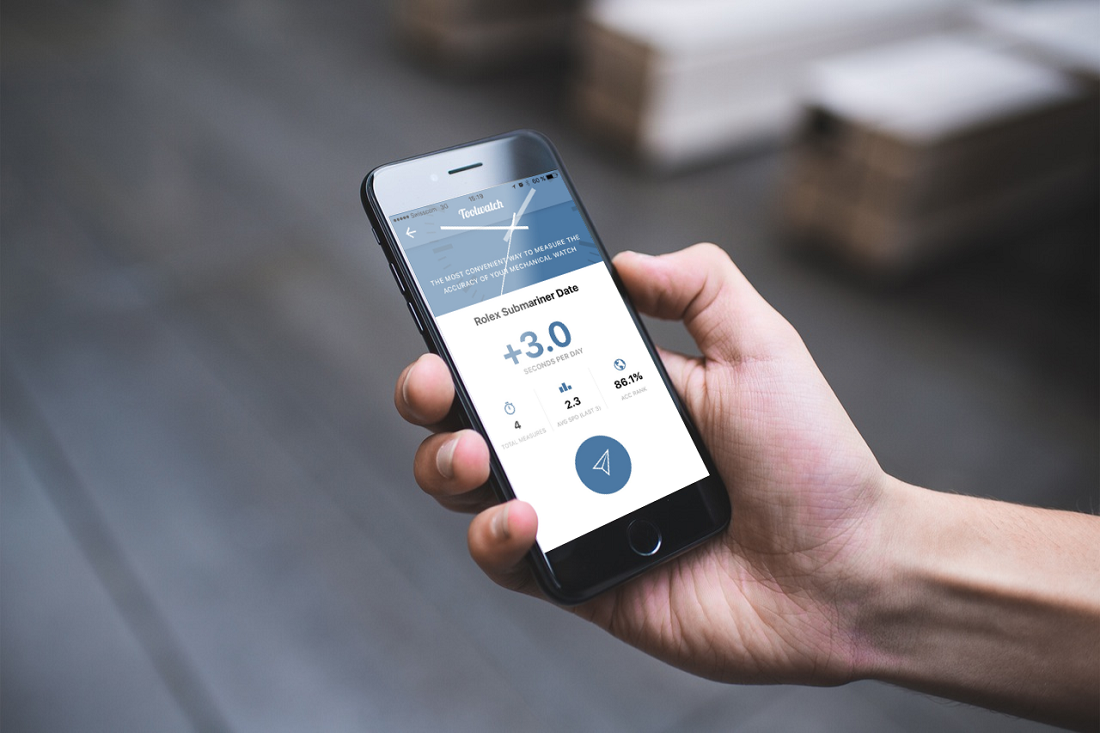
Regularly measuring watch accuracy ourselves could save us time, money, and last but not least, boost our pride! For your convenience and to better enjoy your watch, we have summed up 5 key reasons for why we should regularly check watch accuracy.
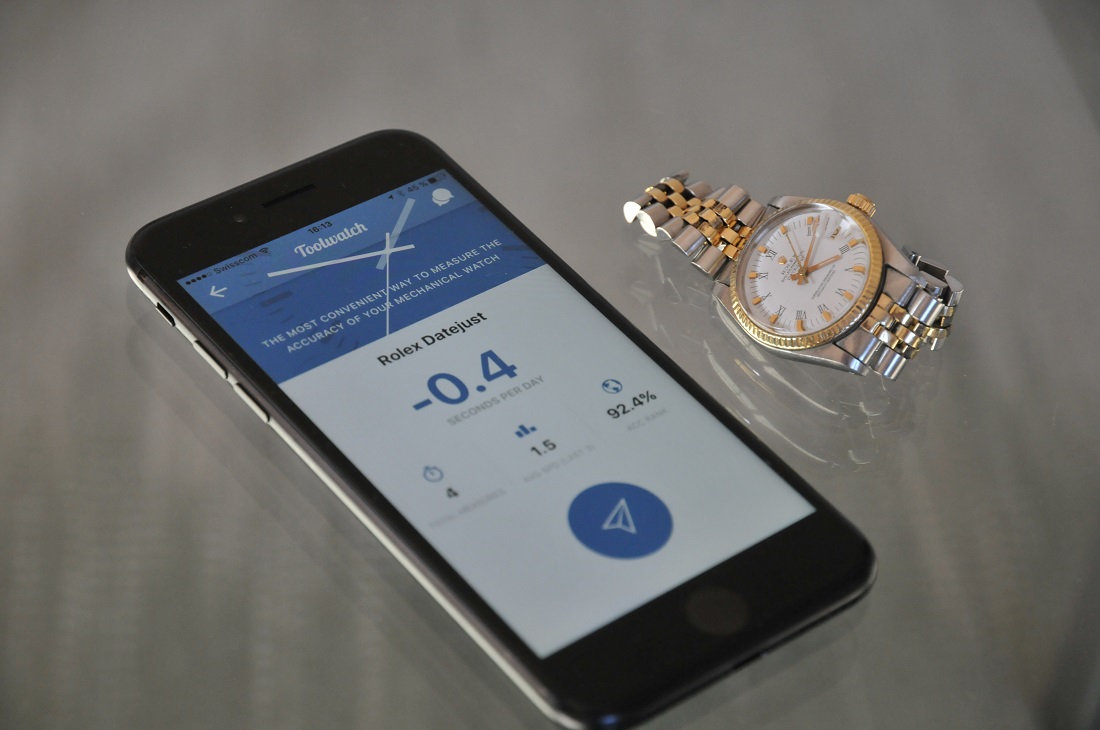
To make sure it is reliable.
A watch’s purpose is to decorate one’s wrist and give accurate time. It’s actually the only way of assessing if it is properly working or not. Regularly measuring a watch is the best way to ensure its long-term reliability, at all times. Why wear a watch providing you with wrong information?
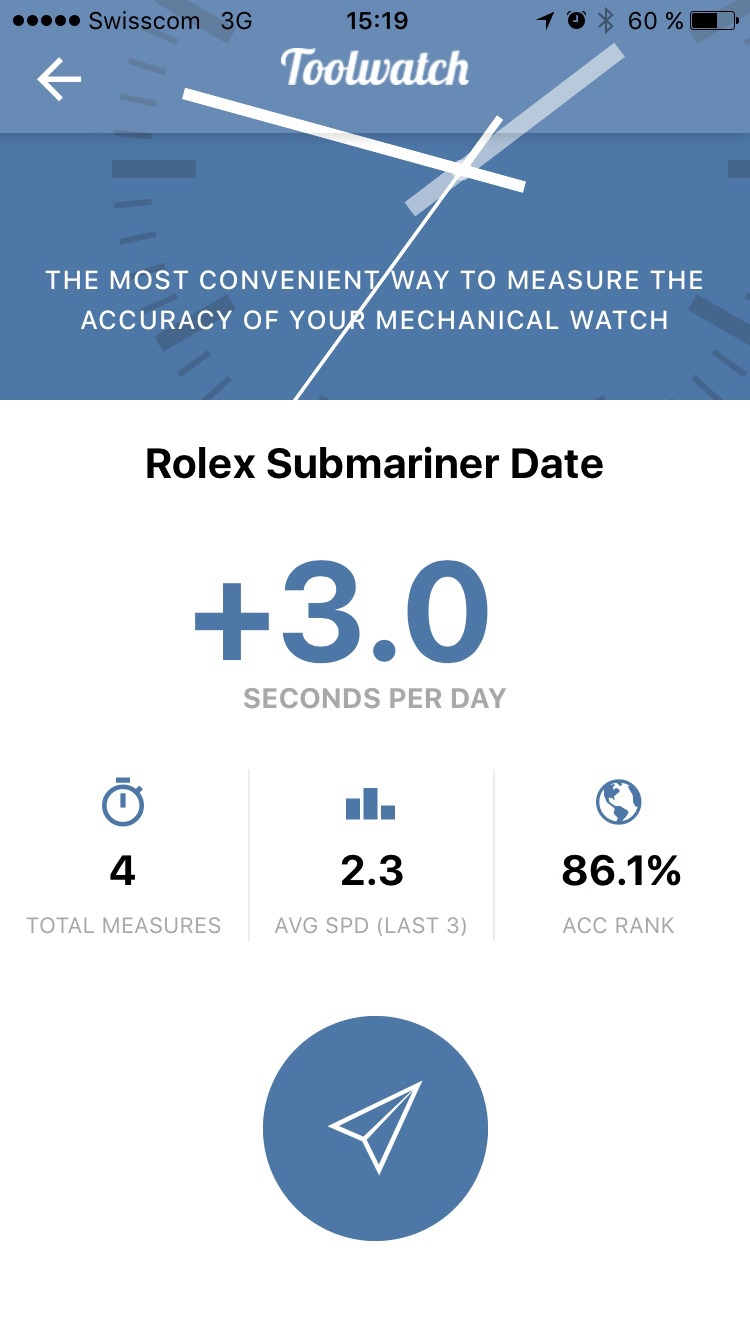
To make sure it is performing in the way the manufacturer promises.
Watchmakers pride themselves with their certifications. Some have COSC, Super COSC, the METAS, the 1,000 hours control, their own certification, and so on. If a watch is still under warranty and not performing within given specifications, then people have the right to a free regulation! As surprising as it can seem, 24.62% of watches tested with Toolwatch.io could be sent back to the manufacturer. Don’t be shy, and ask for a reliable watch!
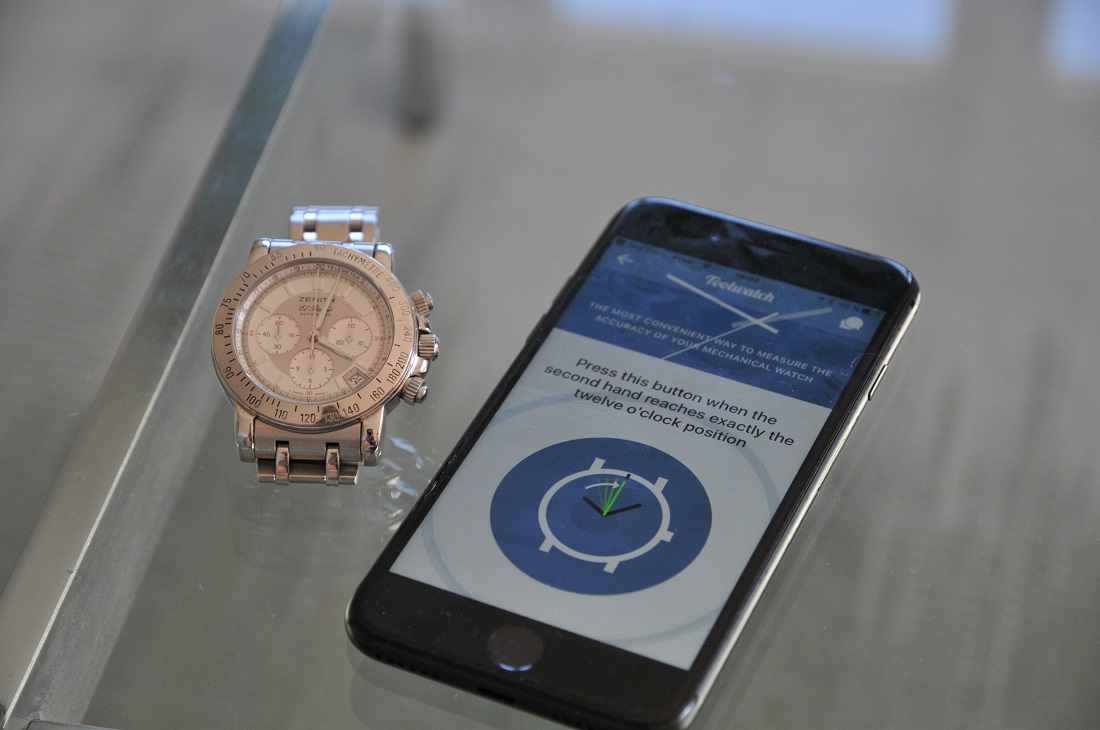
To make sure that your watch isn’t magnetized or needs repair.
Regularly measuring the accuracy of a watch helps you notice if something is going wrong and prevents the movement from being damaged. The oscillating spring of a 4Hz watch is actually running more than 40,000 kilometers every 4 years. Regular accuracy checks are like pit stops to get a clear look at the health of your movement.
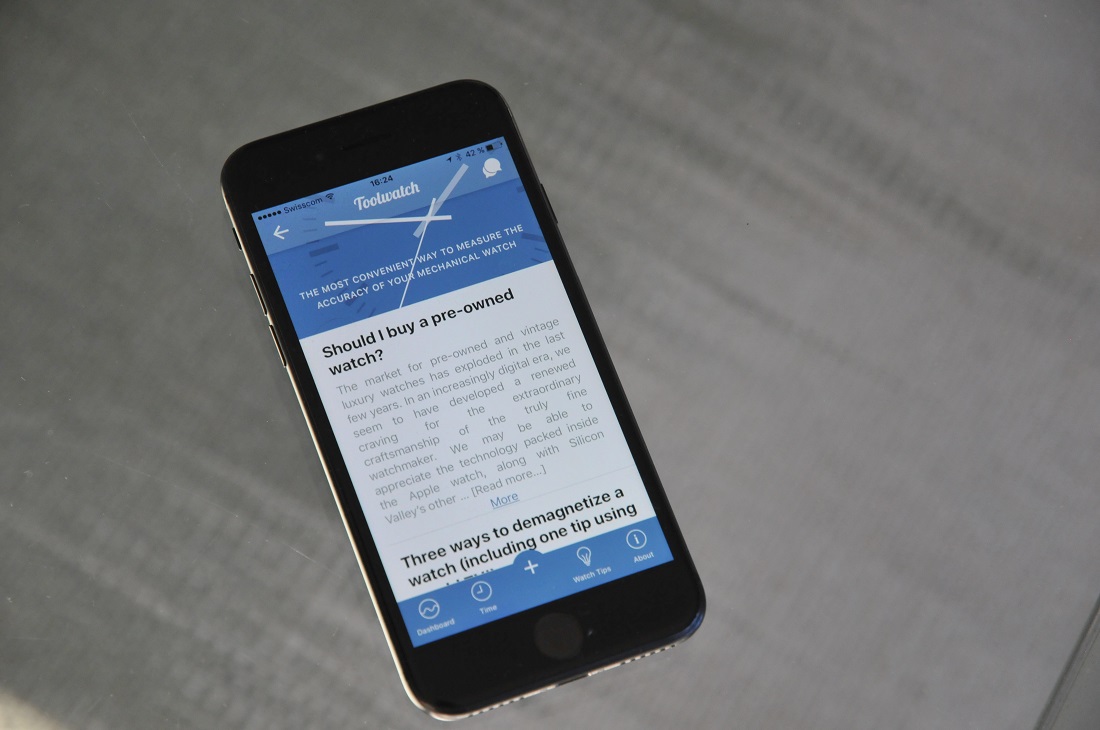
Accuracy results work both ways: either by avoiding further damage to the watch by rushing for a service, or delaying unnecessary servicing costs.
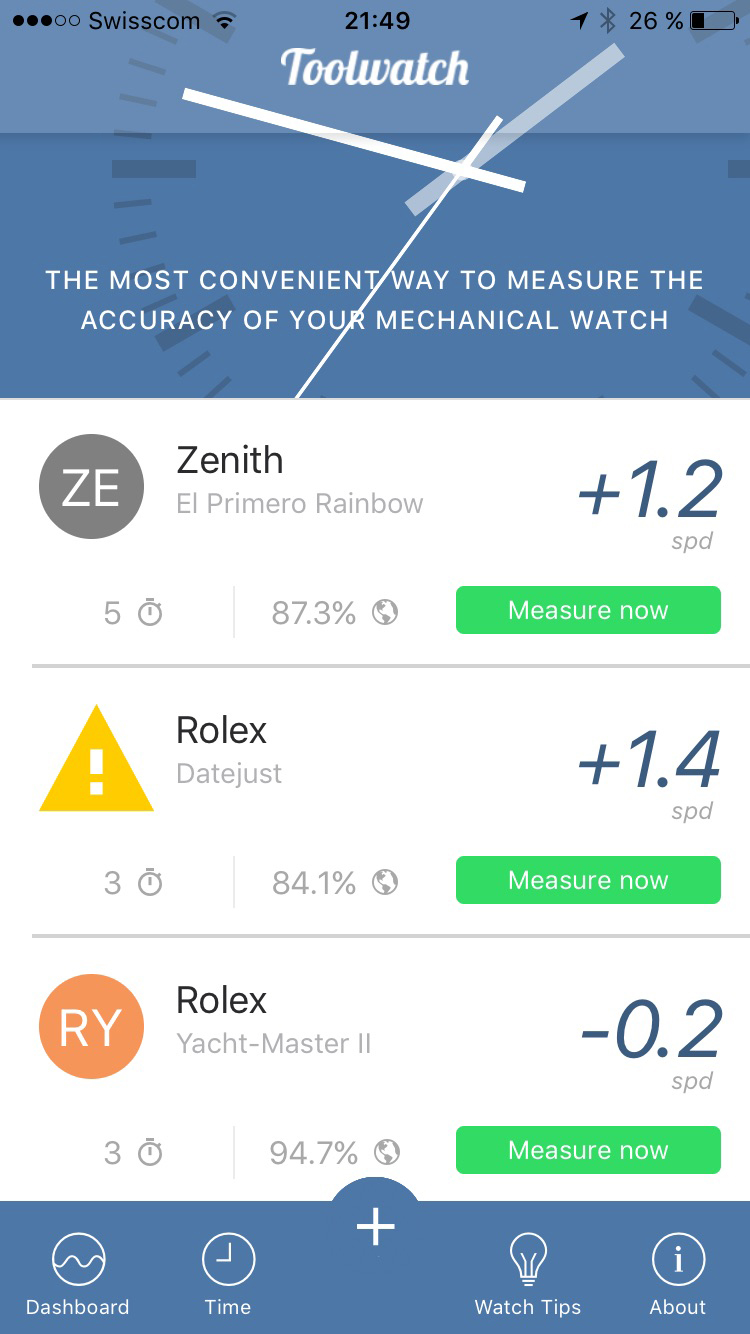
To be able to know which watches in a collection are the most accurate and how brands and models compare with each other.
Is the most expensive watch from one collection the most accurate as well? By monitoring the accuracy of all timepieces, watch freaks will surely see a few surprises. Track, record, and follow the different accuracy trends to learn everything about specific models.
In my personal collection, it is not my Rolex Submariner 14060M which has the best measure (still +1.1 seconds per day on average over 12 measures) but my Zenith El Primero with an average of +0.9 seconds per day over 14 measures). Who would have thought?
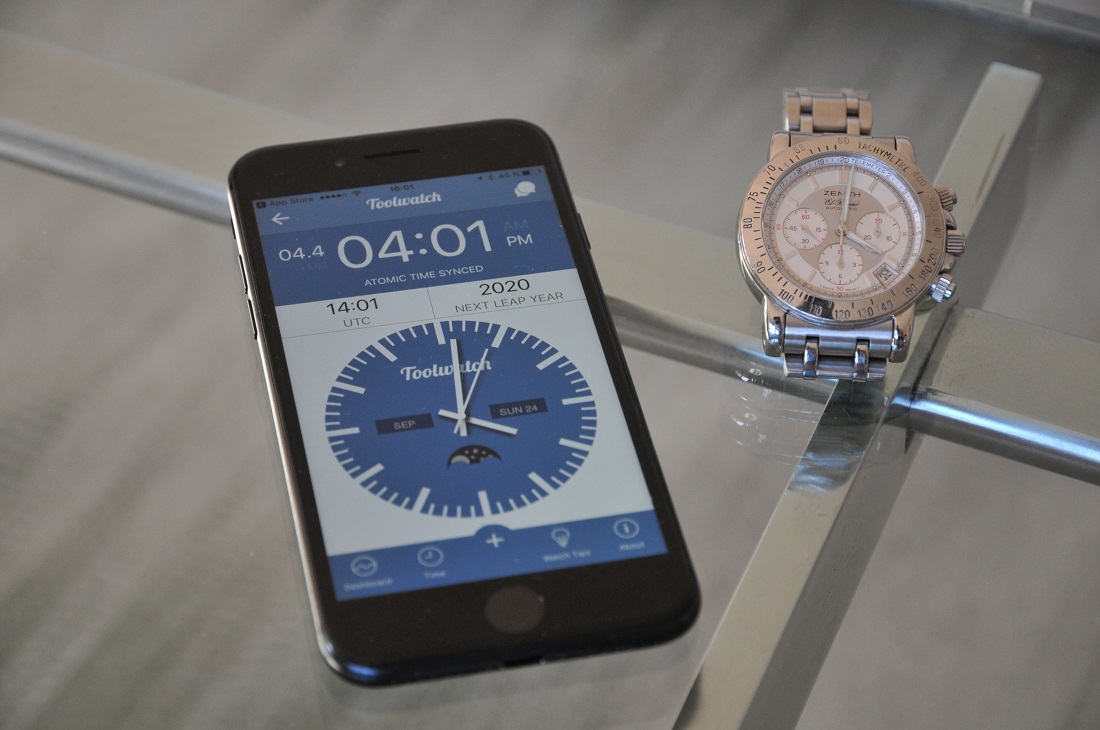
To be more connected with an item we like to have an emotional attachment with.
This app will help watch enthusiasts better understand their watches. Depending on its positions, a watch might indeed run faster or slower and Toolwatch.io will provide this information. Closely monitoring accuracy will also help you know the exact moment a watch should be serviced. If measurements are getting worse despite self-regulation, a service might be needed soon. Critical information such as accuracy both helps aficionados by keeping watches in good condition (good for resale value!) and maintaining their quality through time and generations.
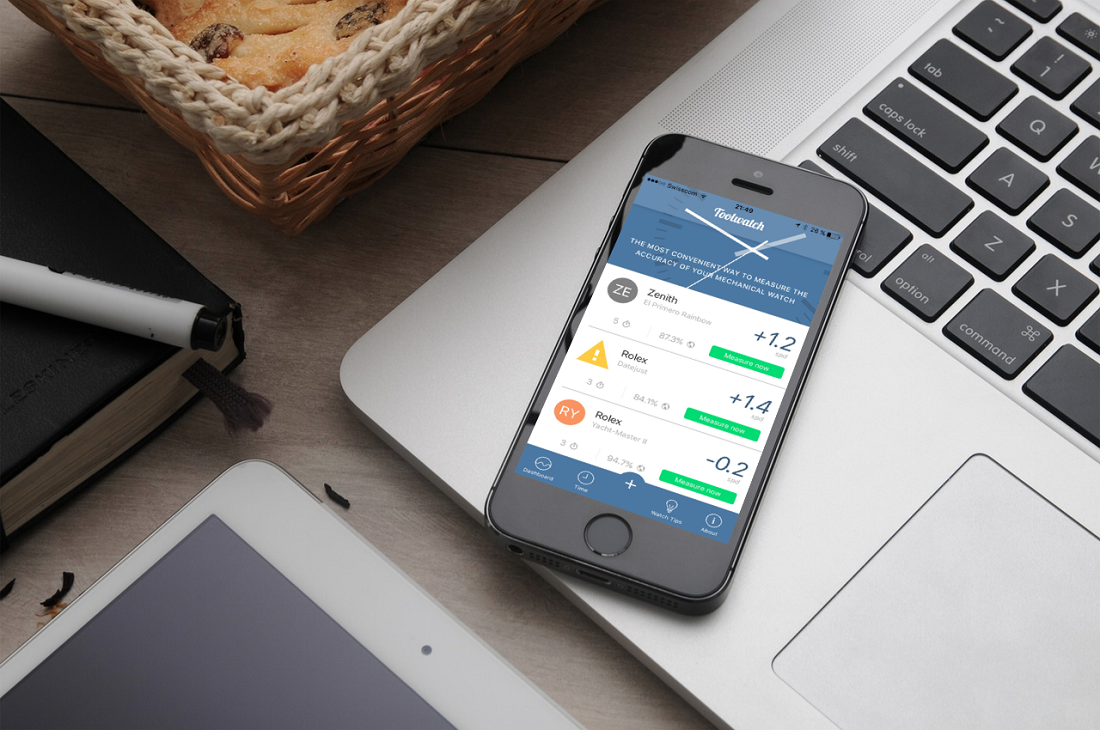
Multiple ways exist to measure accuracy, from the professional tools to an old Excel table sheet, but the easiest way is by using an application such as Toolwatch.io. Our free iOS and Android apps provide a wide range of functions, from measuring accuracy, to learning watch tips, through setting up time with an atomic clock reference.
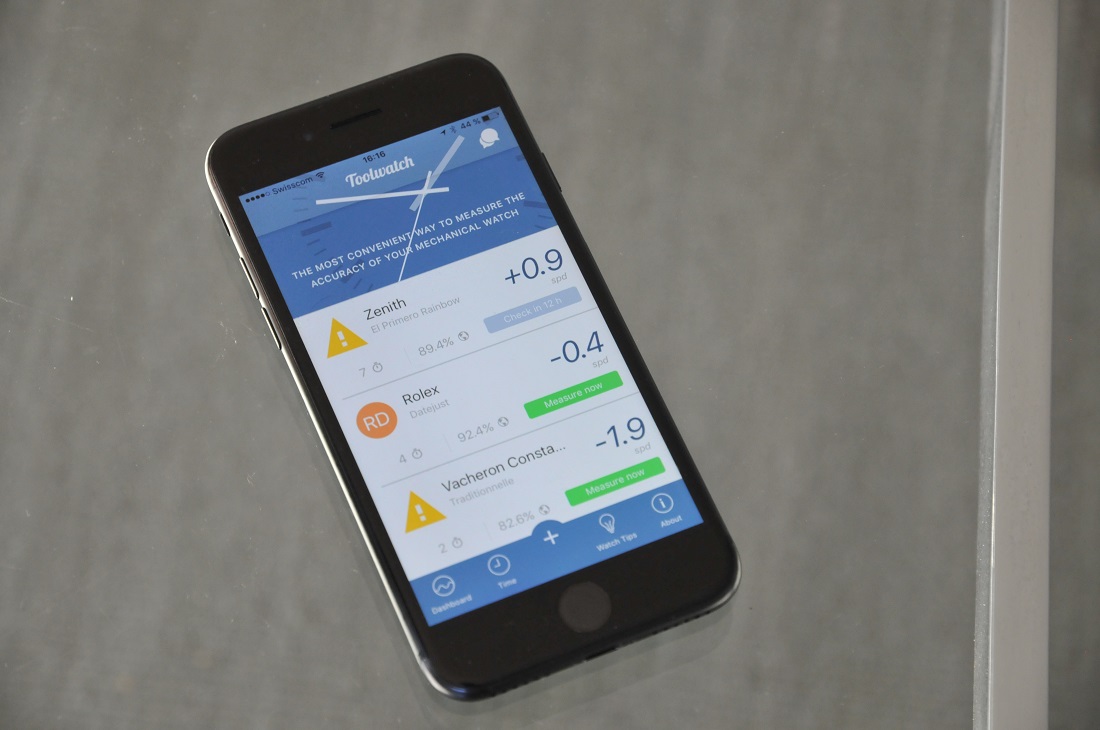
The Toolwatch.io system is linked to the U. S. Naval Observatory’s atomic clocks cluster, which produces a weighted average of several commercial atomic frequency standards. Six active hydrogen masers, and several commercial cesium beam-tube standards dominate it. In our synchronization process, we also take the networking time between individual devices and Toolwatch.io’s servers into consideration to provide the best possible time reference. To sum it up, we do not use computer clocks but the most accurate atomic clock on Earth to synchronize our timepieces.
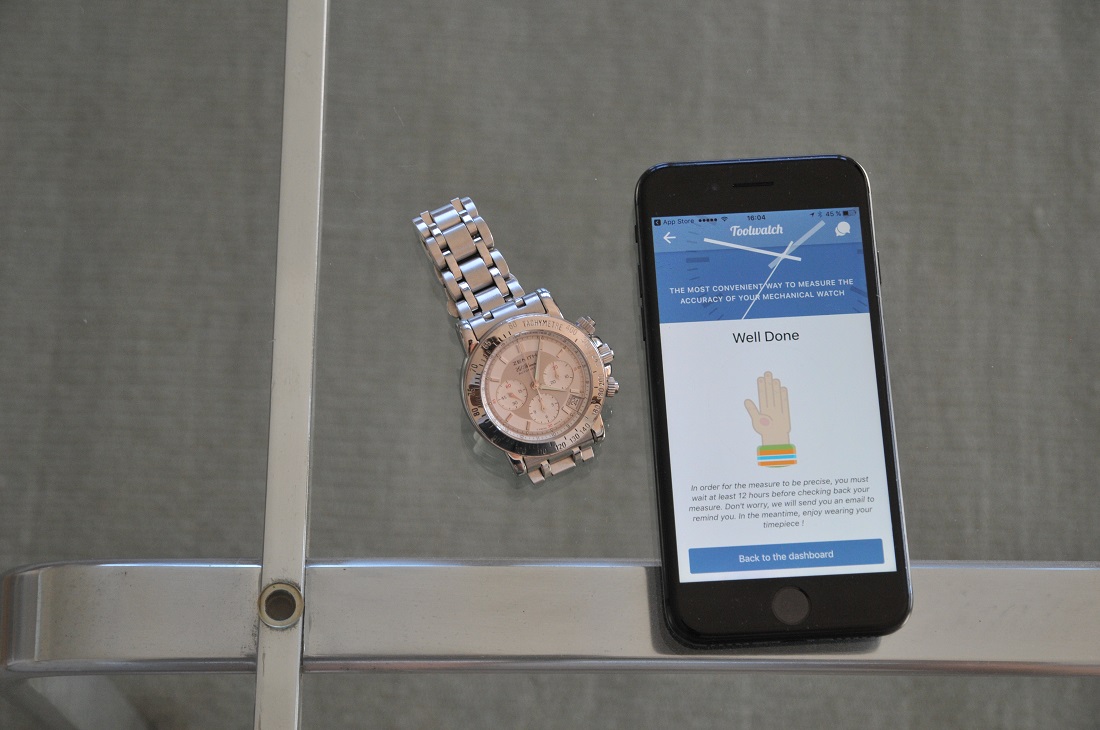
Our team is composed of three watch nerds, including two from the watch industry in Switzerland: Marc and Vincent plus one PhD student, a data scientist from Montreal, Mathieu. The three of us are working hard to provide the best possible watch experience to fellow watch mates. At Toolwatch.io, our aim is to help watch nerds achieve a deeper understanding of their mechanical treasures! toolwatch.io
Sponsored Posts are a form of advertising that allows sponsors to share useful news, messages, and offers to aBlogtoWatch readers in a way traditional display advertising is often not best suited to. All Sponsored Posts are subject to editorial guidelines with the intent that they offer readers useful news, promotions, or stories. The viewpoints and opinions expressed in Sponsored Posts are those of the advertiser and not necessarily those of aBlogtoWatch or its writers.